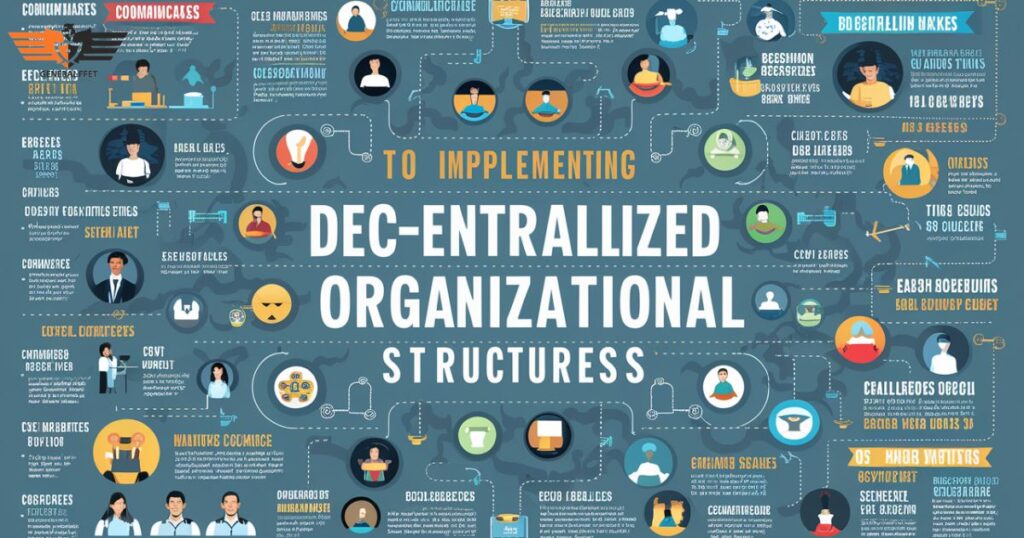In today’s fast-paced business world, we’re witnessing a quiet revolution. It’s not about the latest tech gadget or a groundbreaking AI algorithm.
Instead, it’s a fundamental shift in how we think about and run organizations. Welcome to the era of the disqualified org.Imagine a workplace where your worth isn’t boiled down to a set of cold, hard numbers.
Where creativity and human connection trump spreadsheets and KPIs. This isn’t some utopian dream, it’s the reality for a growing number of forward-thinking companies across the United States and United Kingdom.
Understanding the Disqualified Org

What Exactly is a Disquantified Org?
At its core, a disquantified org is a business that prioritizes qualitative measures over quantitative ones. It’s an approach that recognizes the limitations of relying solely on numbers to gauge success and drive decision-making.
Think about it. How often have you felt that your job performance couldn’t be accurately captured by metrics alone? That’s the problem disqualified orgs aim to solve.
Here’s a quick comparison:
| Traditional Org | Disquantified Org |
| Focuses on numbers and metrics | Emphasizes quality and intangible values |
| Relies heavily on KPIs | Uses holistic performance evaluations |
| Often leads to short-term thinking | Encourages long-term, sustainable strategies |
| Can create a culture of competition | Fosters collaboration and creativity |
Read Related Article…
Unveiling the Digital Frontier of Media Innovation: The Rise of ElectronMagazine
The Philosophy Behind Disqualified Orgs
Disqualified orgs operate on a simple yet powerful principle: not everything that counts can be counted. They recognize that human potential, creativity, and innovation often defy quantification.
This doesn’t mean throwing all metrics out the window. Rather, it’s about finding a balance and acknowledging that some of the most valuable contributions to a business can’t be easily measured.
The Evolution of Disqualified Org

The Quantification Obsession
For decades, businesses have been obsessed with numbers. From Frederick Taylor’s scientific management in the early 1900s to the rise of Big Data in the 21st century, we’ve seen an ever-increasing focus on quantifying every aspect of business.
But as the saying goes, “What gets measured gets managed.” And sometimes, that’s not always a good thing.
The Tipping Point
The shift towards disqualified orgs didn’t happen overnight. It was a gradual realization that something was missing in our metrics-driven world. Key events and thought leaders played crucial roles:
- The 2008 financial crisis exposed the dangers of over-relying on quantitative models.
- Books like Daniel Pink’s “Drive” highlighted the importance of intrinsic motivation over extrinsic rewards.
- Tech giants like Google started experimenting with more holistic management approaches.
Disqualified Org’s Journey to the Spotlight
As more businesses started to adopt disqualified principles, success stories began to emerge. Suddenly, the idea wasn’t so fringe anymore. It was proving its worth in the real world.
Read Related Article…
Getting in Touch with TurboGeekOrg: Your Gateway to Cutting-Edge Technology
Key Components of a Disquantified Org: Building Blocks of a New Paradigm
Qualitative Performance Metrics
Disqualified orgs don’t abandon metrics altogether. Instead, they broaden their definition of what constitutes a meaningful measure of success. Some examples include:
- Employee satisfaction and engagement levels
- Customer loyalty and brand perception
- Innovation and creativity metrics
- Social and environmental impact assessments
Holistic Decision-Making Processes
In a disqualified org, decision-making isn’t just about crunching numbers. It’s about integrating various sources of information:
- Data and analytics
- Intuition and experience
- Qualitative feedback from employees and customers
- Long-term strategic considerations
This approach leads to more nuanced, context-aware decisions that often yield better results in the long run.
Culture of Trust and Autonomy
Perhaps the most crucial aspect of a disquantified org is its culture. These organizations foster:
- Trust in employees’ judgment
- Autonomy in decision-making
- Open communication channels
- A focus on learning and growth rather than punitive measures
Disquantified Org in Action

Case Study 1: Tech Giant’s Transformation
Let’s look at how a major US tech company embraced disqualified principles:
Company X was known for its rigorous performance review system, ranking employees against each other. This led to intense competition and a focus on short-term results. In 2013, they decided to shake things up.
They ditched the ranking system and introduced:
- Regular check-ins between managers and employees
- A focus on personal growth and team collaboration
- Qualitative feedback from peers and customers
Employee satisfaction skyrocketed, and innovation flourished. Within two years, the company saw a 20% increase in patent filings and a significant boost in revenue.
Case Study 2: UK Retailer’s Revolutionary Approach
Across the pond, a British retail chain took a bold step towards disqualification:
Retailer Y was struggling with high employee turnover and lackluster customer service.They decided to overhaul their entire approach to management.
Key changes included:
- Eliminating individual sales targets
- Introducing team-based goals focused on customer satisfaction
- Implementing a profit-sharing scheme for all employees
The outcomes were impressive. Employee turnover dropped by 35%, customer satisfaction scores improved by 28%, and profits saw a steady increase over the next three years.
Navigating Challenges in Implementing Disquantified Org Structures

While the benefits of disqualified orgs are clear, the transition isn’t always smooth sailing. Here are some common hurdles:
- Resistance to change: Many employees and managers are comfortable with traditional metrics and may resist new approaches.
- Balancing act: Finding the right mix of qualitative and quantitative measures can be tricky.
- Scaling issues: As organizations grow, maintaining a disqualified approach can become more challenging.
To overcome these challenges, successful disqualified orgs often:
- Invest heavily in change management and communication
- Gradually introduce new metrics alongside traditional ones
- Develop robust systems for capturing and analyzing qualitative data
The Perks of Embracing Disquantified Org
The benefits of adopting a disqualified approach are numerous:
- Enhanced employee satisfaction and retention: When people feel valued for their whole contribution, not just their numbers, they’re more likely to stick around.
- Increased innovation and creativity: By removing the pressure of constant measurement, employees feel freer to take risks and think outside the box.
- Improved customer relationships: A focus on quality over quantity often translates to better customer experiences.
- Long-term sustainability: By considering broader impacts, disqualified orgs are often better positioned for long-term success.
Disquantified Orgs and Technology
Contrary to what you might think, disqualified orgs aren’t anti-technology. In fact, they often leverage advanced tech to support their approach:
- AI and machine learning can help analyze qualitative data at scale
- Collaboration tools facilitate open communication and idea sharing
- Advanced analytics can provide insights into complex, non-quantitative factors
The key is using technology to enhance human judgment, not replace it.
Leading in a Disquantified Org

Leadership in a disqualified org looks different. Successful leaders in this environment tend to:
- Prioritize emotional intelligence
- Foster open dialogue and transparency
- Embrace uncertainty and complexity
- Focus on coaching and developing their team members
As management guru Peter Drucker once said:
“The most important thing in communication is hearing what isn’t said.”
This quote encapsulates the essence of leadership in a disquantified org.
The Future of Disqualified Orgs
As we look to the future, several trends are emerging in the world of disqualified orgs:
- Increased focus on well-being: More organizations are likely to incorporate measures of employee well-being into their evaluation processes.
- Integration of environmental and social factors: As stakeholders demand more responsible business practices, disqualified orgs are well-positioned to lead the way.
- Customized employee experiences: Advanced tech may allow for more personalized approaches to management and development.
The Disqualified Revolution is Here to Stay

The rise of disqualified orgs represents a fundamental shift in how we think about business success. By moving beyond narrow quantitative measures, these organizations are unlocking new levels of creativity, engagement, and sustainable growth.
Whether you’re a business leader in New York or London, the principles of disqualification offer a compelling alternative to traditional management approaches. As we’ve seen, companies that embrace these ideas often find themselves not just surviving, but thriving in today’s complex business landscape.
Frequently Asked Questions
When was the rise of big business?
The rise of big business in the United States occurred primarily in the late 19th century, from about 1870 to 1900. This period, often called the Gilded Age, saw the emergence of large corporations and industrial tycoons.
What was one factor that led to the rise of big business?
A key factor in the rise of big business was technological innovation, particularly in transportation and communication. The expansion of railroads and telegraph networks allowed companies to operate on a much larger scale than before.
When did the rise of industry start?
The rise of industry, known as the Industrial Revolution, began in Britain in the mid-18th century, around 1760. It spread to other parts of Europe and North America in the early 19th century.
What led to the rise in industry?
The rise in industry was driven by technological advancements, particularly in manufacturing and energy production. The invention of steam power and new manufacturing processes revolutionized production capabilities.
When did industry start to grow?
Industry started to grow significantly during the Industrial Revolution, beginning in the mid-18th century. This growth accelerated throughout the 19th century as industrialization spread globally.
What is the career mode in the rise of industry?
The career mode in “Rise of Industry” is a game mode where players start with limited resources and must build their industrial empire from scratch. It challenges players to manage resources, expand production, and compete with AI opponents.
Final Thoughts
As we’ve explored, the rise of disqualified org marks a significant shift in the modern business landscape. This approach, which prioritizes qualitative measures and human elements over rigid numerical metrics, is reshaping how companies operate and evaluate success.
By embracing disqualified principles, organizations are fostering environments that encourage creativity, innovation, and employee satisfaction. While challenges exist in implementation, the benefits from improvement.

Admin of GeneralFet.com, dedicated to providing diverse and insightful content on a wide range of general topics. Passionate about sharing knowledge and fostering a community of curious minds.








